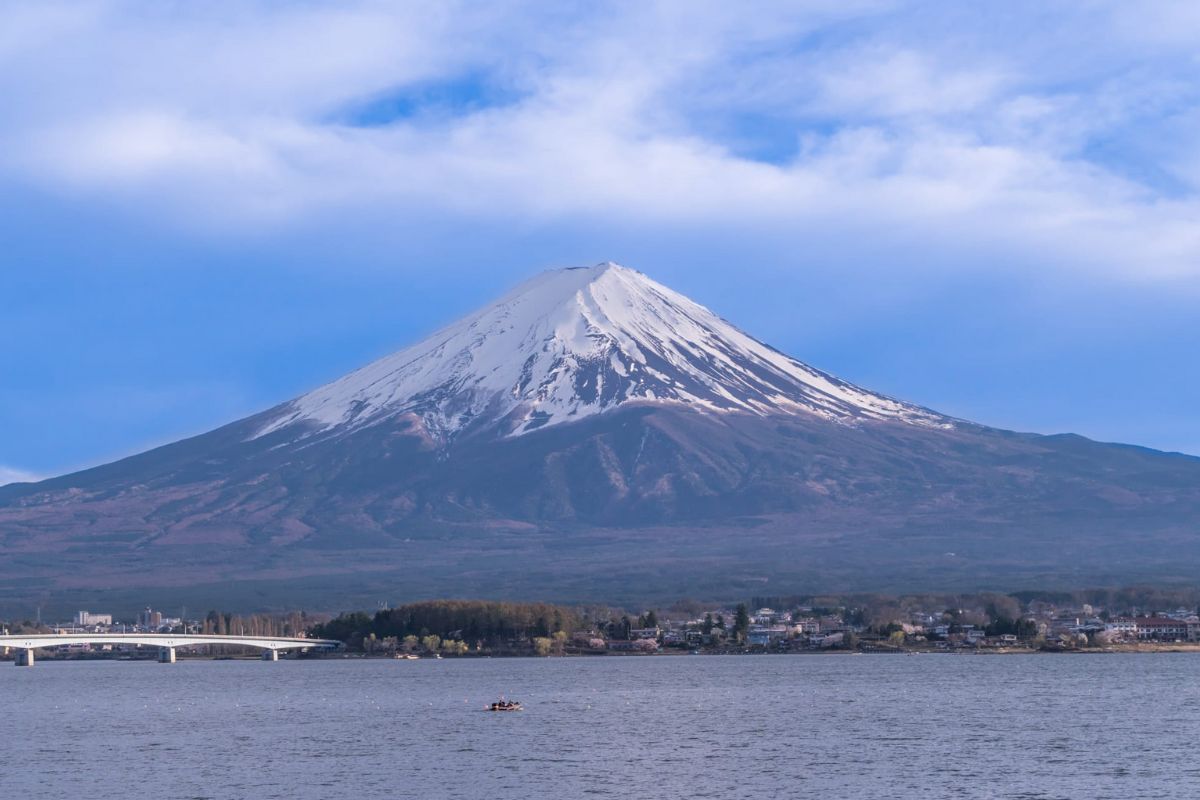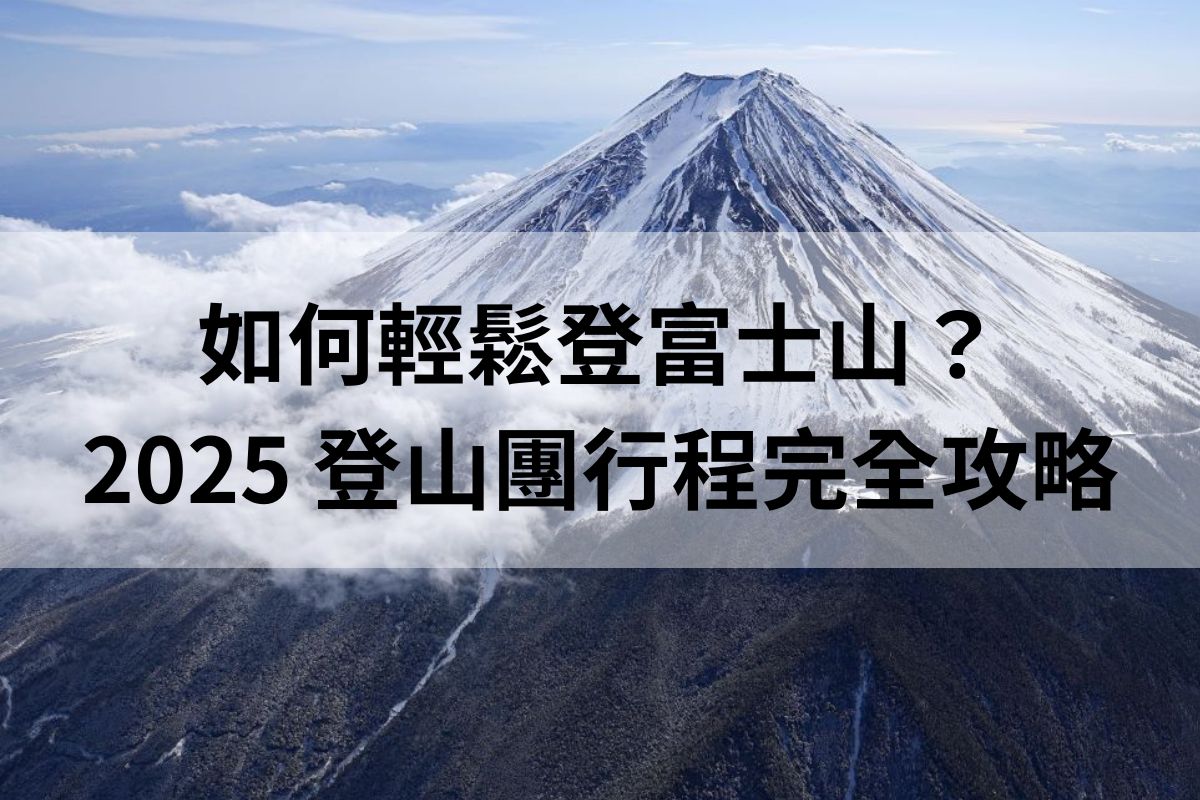
(Image source: JAPAN FORWARD)
Mount Fuji is Japan's most famous peak and a national symbol, hailed as a must-visit destination for travelers. As a dream destination for mountain climbers, every summer it attracts thousands of challengers, who, with physical strength and gear, prepare to reach the summit of Mount Fuji. To make the journey more convenient and comfortable, Orange Cat has specially launched a Mount Fuji climbing tour that combines a chartered car service with professional climbing plans, allowing you to easily reach the starting point and complete the challenge. This article will provide a detailed introduction to the tour itinerary and answer the most common questions that arise during the planning process, helping you prepare for this dreamlike Mount Fuji trip without any worries.
Mount Fuji Climbing Tour Top 10 Q&A
How many climbing routes are there for Mount Fuji? Which route will this tour use?
Is previous experience and a fitness test required for the climb?
What are some good photo spots along the route?
How should I prepare for and respond to altitude sickness?
What should I pack in my small daypack?
What are the mountain hut locations and facilities like?
Are there any specific weather changes I should pay attention to when climbing Mount Fuji?
Where can I get the necessary climbing gear?
What are the climbing fees and hidden costs?
Mount Fuji Climbing Itinerary
Day 1: 05:00 Meet at Shinjuku Post Office, Yoyogi 2-chome (Shinjuku Station South Exit) 09:00 Begin the climb from Fujinomiya 5th Station 16:00 Arrive at the mountain hut (8th Station)
Breakfast, Lunch: Self-provided
Dinner: Enjoy dinner at the mountain hut
Accommodation: 8th Station mountain hut (shared sleeping quarters)
Day 2: 02:30 Begin the climb 06:00 Hike around the crater of Mount Fuji (O-hachi-meguri) 07:00 Begin descent 11:00 Arrive at Fujinomiya 5th Station trail entrance 13:00 Lake Kawaguchi (2-hour stop) 19:00 Return to Shinjuku Yoyogi 2-chome Post Office (Shinjuku Station South Exit)
Breakfast: Mountain hut breakfast
Lunch, Dinner: Lake Kawaguchi (self-provided)
Dinner: Self-provided
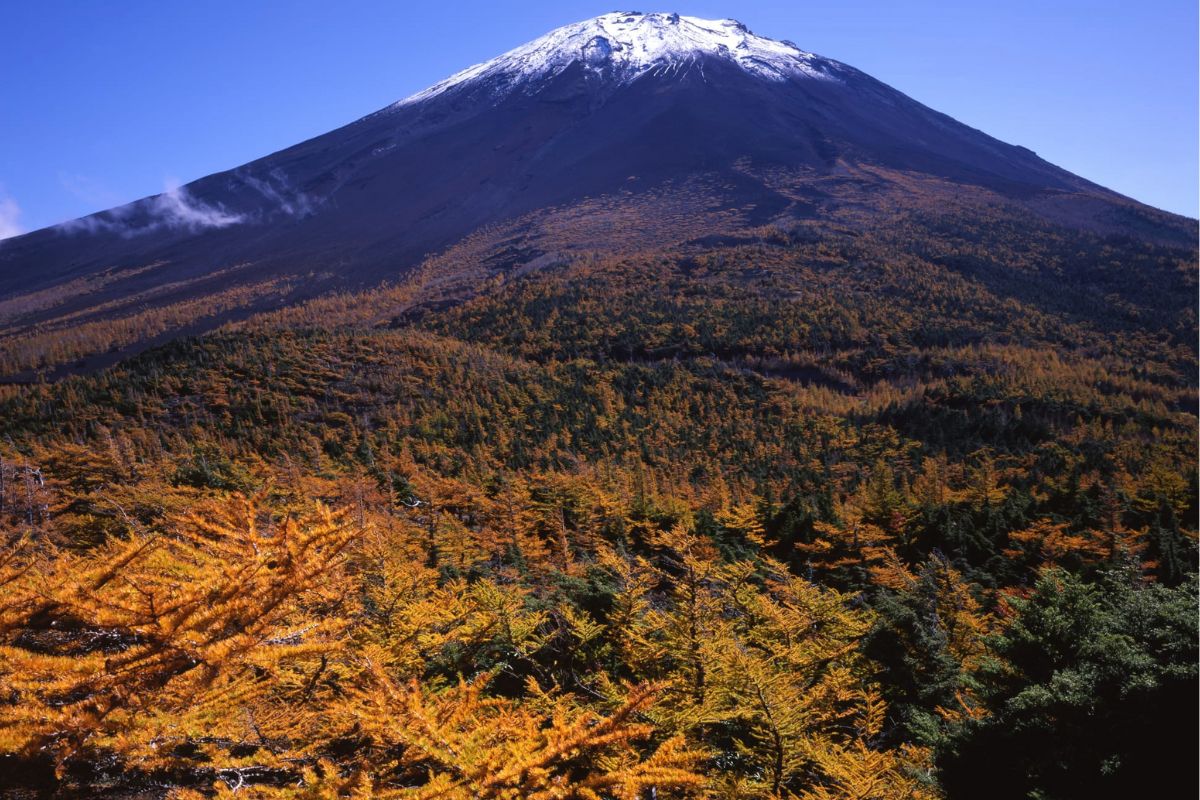
(Image source:JapanEndlessDiscovery)
1. How many climbing routes are there for Mount Fuji, and which one does this tour use?
There are four climbing routes on Mount Fuji: the Fujinomiya, Yoshida, Subashiri, and Gotemba routes. For the Orange Cat Travel climbing tour, we have carefully arranged the Fujinomiya route for our clients. It is the shortest and most classic route, spanning only about 5 kilometers. Due to its shorter climbing time, this route is perfect for first-time climbers. With our professional planning, you will experience the mountain's grandeur and charm in the most comfortable way possible.
2. Do I need climbing experience or a fitness test to go up the mountain?
You don't need professional climbing experience to tackle Mount Fuji, but you do need a certain level of physical fitness and preparation to carry food and gear and to handle several hours of walking. The Fujinomiya route is well-planned with clear signposts and defined paths. Most of the route doesn't require technical climbing skills; it's mainly hiking on a path without extremely treacherous terrain, making it very suitable for first-timers.
The Orange Cat Travel climbing tour includes a thoughtful private car service that takes you directly to the 5th Station trailhead (the halfway point of Mount Fuji, at an altitude of about 2,300 meters). This is not only efficient and convenient, but it also saves you time and energy, allowing you to focus on the climbing challenge itself. This service is also great for travelers who have already planned their own trip to Tokyo, as it helps avoid travel fatigue and makes the whole journey more enjoyable.
To ensure you successfully complete the climb, we recommend doing some simple fitness tests before you go, such as long-distance running, brisk walking, or swimming, to improve your cardiovascular health and stamina. Maintaining a regular exercise routine is also a good idea. Before the climb, be sure to check your health. If you are not feeling well, we recommend postponing the trip to ensure your safety. If you prefer to meet us at the trailhead, we offer a discount. For more details, please contact customer service on the product page.
3. What are the best photo spots on the tour?
The majestic scenery of Mount Fuji provides every climber with an unforgettable, once-in-a-lifetime experience. Our Orange Cat Travel climbing tour has several excellent photo spots for you to capture this special journey:
The 5th Station Trailhead: This is the starting point of the journey and a great spot for a commemorative photo. You can take a picture of the mountain's full grandeur and capture the exciting moment you're about to begin the climb.
The 7th and 8th Stations: Along the way, you can capture spectacular floating clouds and even get a chance to see a reflection of Mount Fuji in a sea of clouds—a truly breathtaking sight.
During the Climb: As you ascend, turning back to look at the vast landscape reveals another side of Mount Fuji's beauty. This is a moment when many climbers can't help but reach for their cameras.
The Summit: The highlight of the trip. Once you reach the top, you can gaze down at the sea of clouds and the boundless scenery. This isn't just the culmination of your challenge; it's the most memorable and photo-worthy moment of the entire journey.
From the commemorative photo at the 5th Station to the breathtaking view from the summit, every location will add unique memories to your Mount Fuji trip. Remember to bring your camera or phone to capture these precious moments!
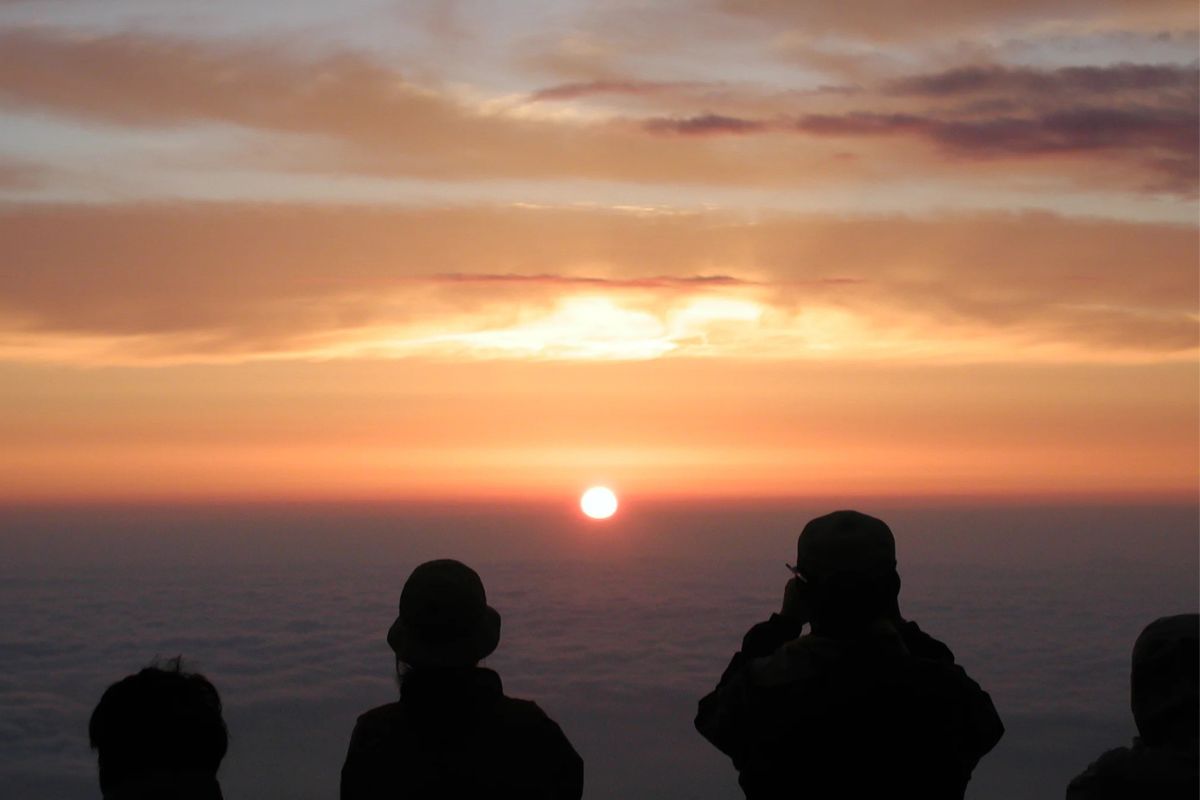 (圖片資(Image source:富士山八合目山小屋江戶屋)
(圖片資(Image source:富士山八合目山小屋江戶屋)
4. How should I prepare for and respond to altitude sickness?
Altitude sickness is a common physiological reaction during mountain climbing, especially for first-time Mount Fuji climbers. To minimize its impact on your trip, we recommend the following preparations:
Get enough rest: Make sure you get a good night's sleep before the trip. Being well-rested helps your body adapt.
Stay hydrated: Maintain your body's water balance by drinking water regularly during the climb. However, avoid over-drinking, which can put a strain on your body.
Replenish energy: Eat high-calorie carbohydrates like energy bars or chocolate to provide your body with sustained energy.
Consult a doctor: Before you go, you can consult a doctor to check your health and get any necessary medication for altitude sickness.
Pace yourself: Avoid overexertion during the climb. Adjust your pace to give your body time to acclimate to the altitude.
Orange Cat's climbing tour is specially designed with a reasonable itinerary. Our private car service takes you directly to the 5th Station, which helps climbers adapt more easily and reduces the burden of travel fatigue.
5. What should I pack in my small daypack?
Orange Cat provides a private car service, so you can store your larger luggage in the vehicle and travel light, focusing on enjoying the climb. Here is a recommended packing list for your daypack:
Water: Bring at least 2 liters of water each day. Staying hydrated is crucial, especially at high altitudes where you lose fluids faster.
Food: Pack high-calorie, easy-to-carry snacks like nuts, energy bars, and chocolate to replenish your energy at any time.
Warm clothing: Mountain temperatures are low and the weather can change quickly. Bring a windproof and waterproof jacket and dress in layers to adapt to temperature changes.
Headlamp or flashlight: Essential for climbing in the early morning or at night to ensure you can see where you're going.
Sunscreen: Bring sunscreen, a hat, and sunglasses to protect against intense UV rays.
Other items: Gloves, knee pads, and personal medications (like altitude sickness pills and painkillers).
Being well-prepared will not only give you peace of mind but also enhance your overall climbing experience. If you have any other questions about packing, please contact Orange Cat customer service for more personalized advice.
6. What are the mountain huts like, and where are they located?
Mountain huts are crucial for resting and adapting during the climb, making them a key part of the Mount Fuji journey. Orange Cat's tour specifically arranges accommodation for guests at a mountain hut at the 8th Station. This location is only about 1.5 to 2 hours from the summit, allowing you to easily reach the top the next morning to see the magnificent Mount Fuji sunrise, which is one of the biggest highlights of the entire trip.
Mountain Hut Facilities and Notes:
Accommodation: The huts provide shared sleeping spaces, with a basic sleeping bag and mat for each climber, ensuring you get enough rest at high altitude.
Water Limitations: Since Mount Fuji is a volcanic mountain with limited natural water sources and high-altitude water supply is extremely difficult, the huts do not provide shower facilities. However, drinking water is available.
Food and Convenience: The huts offer basic meal services to ensure climbers have enough energy. We still recommend bringing some light snacks for supplements.
Changes: Mountain hut accommodations may change due to weather or itinerary adjustments. The Orange Cat team will contact guests as soon as possible to ensure the trip runs smoothly.
Staying in a mountain hut is an essential part of the Mount Fuji climbing experience. It not only provides a place to rest but also gives you a chance to experience the climber's lifestyle firsthand. After a night's rest in the hut, you'll be ready to greet the stunning sunrise from the summit, creating a truly unforgettable memory.
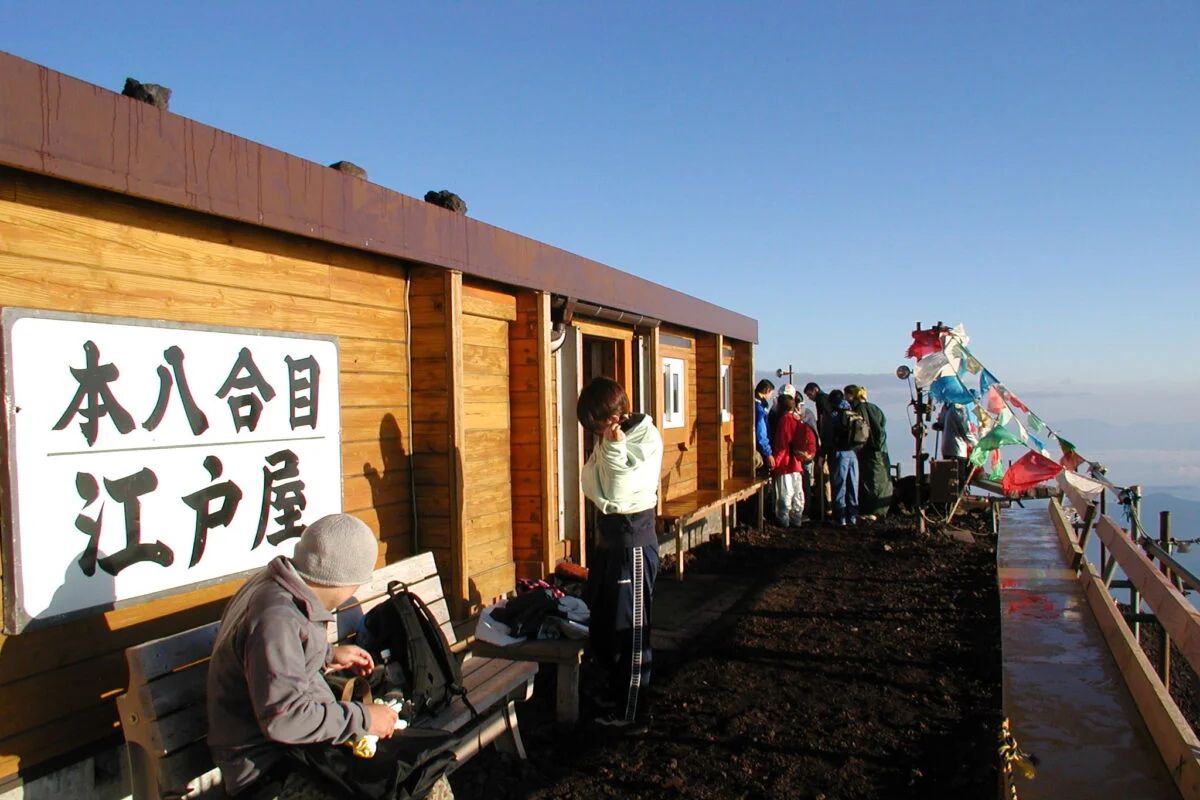 (圖片資(image source:富士山八合目山小屋江戶屋)
(圖片資(image source:富士山八合目山小屋江戶屋)
7. What weather changes should I be particularly aware of when climbing Mount Fuji?
Mount Fuji's weather is notoriously unpredictable. Even in summer, the summit temperature can drop to near 0°C, especially at night or when watching the sunrise. We recommend bringing a windproof and waterproof jacket, a down jacket, a hat, and gloves to stay warm. High winds and sudden heavy downpours are also common, so you should have a lightweight rain jacket, a backpack rain cover, and ensure your gear is securely fastened. Above the 7th Station, dense fog or low visibility is common, so it's wise to bring a headlamp or flashlight to ensure you can see clearly. Also, the sun's UV rays are very strong, so apply a high-SPF sunscreen and wear a hat and sunglasses.
Orange Cat's climbing tour will constantly monitor the weather and provide professional guidance to ensure your trip is safe and comfortable.
8. Where can I get climbing gear?
You can rent gear at the 5th Station center or check out mountain gear rental websites.
9. What are the climbing fees and hidden costs?
The tour fee for the Mount Fuji trip includes a professional Chinese-speaking mountain guide, round-trip private car transfer from Tokyo to Lake Kawaguchi and the trailhead (for those starting in Tokyo), mountain hut accommodation, dinner, breakfast, and specific overseas activity insurance. The tour price is all-inclusive of tax.
The tour fee does not include airfare, lunch and snacks, food/drinks/goods sold separately at the mountain hut, Tokyo accommodation, the ¥4,000 toll fee, toilet usage fees on Mount Fuji, and climbing gear.
The toilets at high altitudes are difficult to maintain due to limited water and harsh conditions. To reduce environmental pollution, their systems often require special designs, and the operating costs must be shared by climbers. The fee for each use is approximately ¥100-¥300. We recommend bringing enough Japanese yen coins (¥100 coins are the most useful) and your own toilet paper.
10. What about transportation and continuing the trip after the descent?
After descending, you will arrive at Lake Kawaguchi around 1:00 PM. We'll arrange for a two-hour stop for you to enjoy the beautiful lakeside scenery, have lunch and afternoon tea, and admire Mount Fuji from a different perspective. Afterward, a private car will take you back to Tokyo in the evening, bringing the journey to a relaxed and satisfying close.
If you wish to extend your trip and explore Lake Kawaguchi further, please feel free to contact Orange Cat customer service. We can customize an itinerary for you, and a private car is an excellent choice for touring the Lake Kawaguchi area. It allows you to visit more remote restaurants with great views, as the public transportation is not as convenient as in Tokyo.
